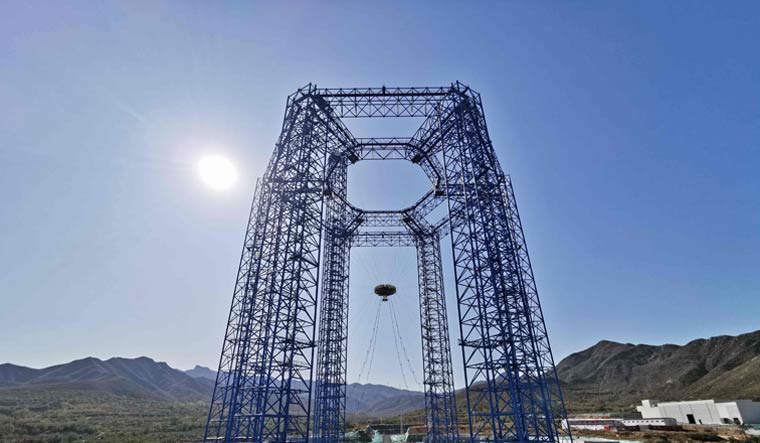On Thursday, China conducted a “hovering and obstacle avoidance test” of its Mars lander, in preparation of the China National Space Administration’s (CNSA) upcoming Mars Global Remote Sensing Orbiter and Small Rover mission.
The test, conducted in the Northern Hebei province in a place called Huailai, took place in a facility simulating Mars-like conditions. The lander had to hover and avoid obstacles in a simulation of the rough landing conditions it would likely face on attempting a real-life Mars landing.
Zhang Kejian, head of the CNSA, told reporters and foreign diplomats that China was on track to launch its Mars mission. “In 2016, China officially began the Mar exploration mission work, and currently, all of the different development work is progressing smoothly,” he said, according to Reuters.
“The hovering-and-obstacle avoidance test for the Mars lander being carried out today makes up a crucial part of the development process. As scheduled, China’s first Mars exploration mission will take place in 2020,” Kejian said.
The lander will be carried onboard the Long March 5 rocket, with the launch expected to take place by either the end of 2019 or early in 2020. The journey alone will take seven months, while the landing itself—the most challenging part—would take just seven minutes.
China will be building on the success of its Chang’e-4 probe, which landed on the far side of the moon on January 3, 2019. The Mars mission will be the next step in China’s plan to complete a modular space station by 2022.
China’s space program had a $8.4 billion budget in 2017, according to the Organization for Economic Cooperation and Development. By contrast, NASA’s budget in 2018 was $20.7 billion, while that of ISRO in the same year was Rs 9,918 crore ($1.38 billion).
In 2020, the United States will also be conducting a Mars landing, as part of its Mars Exploration Program.


